Whether you are a beginner or a more advanced tennis player, you have a lot of choices when it comes to control-oriented racquets. Below, we’ll review the best tennis racquets for control to help you choose the right one for your skill level, budget, and preferences. Before we get into the specifics, here is the list of top control racquets for 2023.
After testing, studying, and researching all the major tennis racquet brands, we have our picks for the best tennis racquets for control.
What Makes a Tennis Racquet Have More Control?
Before we review each racquet in more detail, let’s look at what actually makes a tennis racquet have control.
String Pattern: Tight String Patterns Offer Better Control
String pattern refers to the number of main and cross strings in the racquet. Common string patterns include 16×19, 18×19, and 18×20.
- The higher the numbers, the closer the strings will be together. This is called a “tight” string pattern and helps players with control and feel.
- Smaller numbers of mains and crosses make for an “open” string pattern which can help with power and spin. The best tennis racquets for spin all have 16×19 string patterns at the most.
Frame Size: Smaller Frames Have More Control
The frame size refers to the part of the racquet that holds the strings together. Frame sizes range from as little as 90 square inches, for advanced racquets, up to 115 square inches for beginners.
A smaller frame size offers better control because the shorter strings decrease the spring effect. This allows players who can create their own power to increase control and accuracy. The best tennis racquets for power usually have larger frames over 100 square inches.
Weight: Heavier Racquets Improve Control (but not too heavy)
The weight refers to the weight of the racquet. This is often measured without strings in the racquet but is sometimes measured with strings. When comparing, make sure you are consistent.
Generally, a heavier racquet is more stable, leading to increased controlled. Nevertheless, if the racquet is too heavy for you, it will result in swing technique problems.
Testing several racquets and finding one you can comfortably swing is best.
Balance: How the Weight is Distributed Affects Control
The balance point of a racquet is defined as the point along the length of the racquet where the weight is split evenly. An evenly balanced racquet would have its balance point exactly in the middle of its length.
Since most adult racquets are 27 inches long (68.59 cm) a balance point of 13.5 inches (34.3 cm) is halfway up the racquet. Therefore the racquet is considered to be “evenly balanced”. If the balance point is greater than 13.5 in, it is considered a “head heavy” racquet, less than 13.5 in would be “head light”.
A head heavy racquet is more stable than a head light one, making it easier to control.
Still, if the racquet is too head heavy, causing you discomfort, it will reduce your efficiency. This is why finding an equilibrium between balance and comfort is important.
Beam Thickness: Smaller Beams Offer Better Control
The beam thickness refers to the racquet frame’s width when looking at it from a profile view. This is usually measured in millimeters. A racquet with a wider beam will typically have increased power while smaller beams will offer better control and feel.
Stiffness: A Flexible Racquet Has More Comfort
The stiffness of a racquet refers to how flexible it is. This is on a scale from 0 to 100 with 100 being the stiffest. A stiffer racquet will have increased power and stability but less comfort and feel. Players with tennis elbow should consider a less stiff racquet.
Length: Shorter Racquets are Easier to Control
The length of tennis racquets is typically 27 inches. Oversized racquets may be up to 28 inches in length which adds power and spin to your shots, due to increased leverage.
In theory, a shorter racquet provides more control. For most players, a standard 27 inch racquet is best anyways.
How String Type & Tension Affect Control
The type of string and tension you use can affect performance as well.
A tighter string tension improves control due to a decreased rebound effect. Looser strings will improve power. Most players today string their racquets between 45 and 60 lbs of tension, depending on the string type.
If you need help deciding which type of string to use, see our reviews and buyer’s guide of the best tennis strings.
How to Choose a Tennis Racquet with Control
Now that you understand what makes a tennis racquet create control, you can start considering different options.
How Your Skill Level Affects Control
In general, beginners will need more power and advanced players seek more control.
Beginners need more power
Players first learning the game of tennis should start with a light racquet featuring a larger head size. This will help them make contact with the ball consistently while learning to rally without wearing out their arm as their muscles get used to the game.
Look for:
- Larger head size: over 100 square inches
- Lighter frame: less than 11 ounces
- More power
Intermediate players need a balanced racquet
Intermediate tennis racquets have a reduced head size and add a little more weight.
Look for:
- Medium head size: 98 to 105 square inches
- Medium weight frame: 10.1 to 11.5 ounces
- Balance of power & control
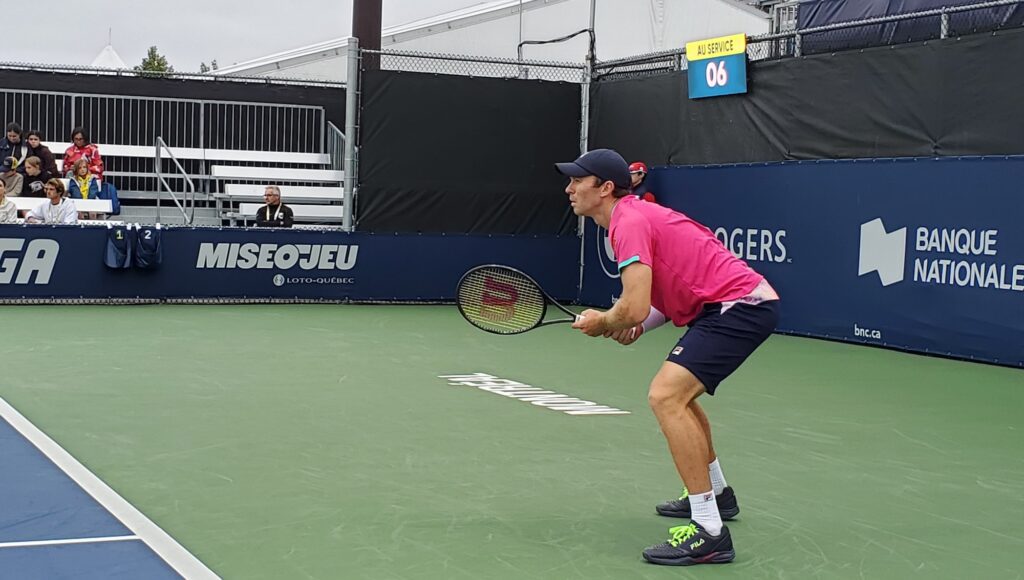
Advanced players need less power & more control
Advanced players should be using 95-100 square inch racquets that allow them to play with control, feel, and precision. These benefits will allow players to play more confidently as they go for their shots.
Look for:
- Smaller head size: 100 or fewer square inches
- Heavier weight frame: Over 11 ounces
- Racquets optimized for control and feel
This chart will give you a high-level idea of what to look for in a tennis racquet.
| Racquet Specifications | Beginner Players Only | Intermediate & Some Beginner |
Advanced & Some Intermediate |
|---|---|---|---|
| Head Size (sq. inches) |
107 – 115 | 100 – 110 | 95 – 100 |
| Length (inches) |
At least 27.5 | 27 – 28 | 27 – 27.5 |
| Weight (strung) |
Under 11 Ounces | 10.1 – 11.5 Ounces | Over 11 Ounces |
| Price | Under $150 | $100 & up | $150 & up |
| Power vs Control | More Power | Balanced Racquet | More Control |
Goals: Budget, Frequency of Play, Preference & Brand
When buying a new tennis racquet, you need to consider your goals as well.
What is your budget?
One of the most important things to consider when buying a racquet is how much you would like to spend.
Racquets can be found as low as $25 and as high as several hundred dollars. Most of the newer racquets are in the $150 to $250 range.
If money is an issue, you can also consider buying a used racquet at Tennis Warehouse or another site.
How often will you play tennis?
You should also consider how often you plan on playing. If you are a weekend warrior or infrequent player, consider more arm-friendly racquets and strings.
If you play more often, testing several racquets and determining what is the most compatible with your strokes is ideal.
Personal Preferences: What do you want from your racquet?
You’ll also want to decide what specifically you want from your racquet. If you play a lot of singles, for example, you may want a racquet that adds topspin to your groundstrokes. If, however, you play mostly doubles and like to go to the net, then you’ll want a racquet with more control for your volleys.
Do you prefer a specific brand?
Some people prefer to play with a certain brand of racquet because they enjoy the grip style, head shape, and/or other factors that make different brands unique.
It’s important to stay open-minded about different brands, but over time, you will likely learn to like one or a few brands.
Reviews of the Top 8 Control-oriented Racquets
Below, we’ll review each of the top racquets on our list in more detail.
Wilson Pro Staff
- Skill Level: Advanced
- Where It Excels: Completely control-oriented.
- What It Lacks: Small sweet spot makes it suited for advanced players.
This is a relatively heavy tennis racquet, built for control and feel. The 16×19 string pattern allows you to generate plenty of spin on your groundstrokes or slice on your backhand like Federer himself. The beam width is narrower than many modern racquets which helps with control. Wilson’s carbon technology enhances the feel and comfort of this racquet as well.
This was my personal favorite control-oriented racquet for it’s precise feel without sacrificing too much in other areas.
Specifications
- Head Size: 97 sq. in.
- Strung Weight: 11.7 oz.
- Length: 27 in.
- String Pattern: 16×19
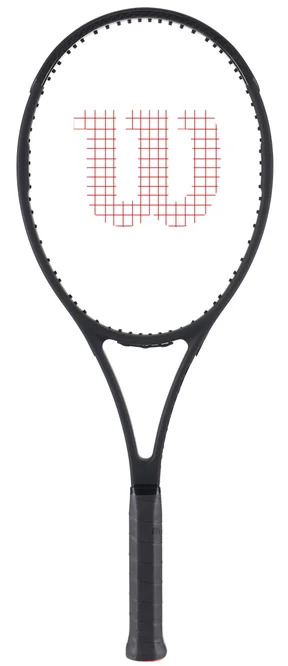
Head Prestige Pro
- Skill Level: Intermediate to Advanced
- Where It Excels: Precise control and feel.
- What It Lacks: It lacks a little bit of comfort, but not much.
The Prestige Pro has a heavy frame and is best for advanced players only. This added weight helps with both power and stability when hitting against pace. The tight string pattern and classic 98 square inch frame give it excellent feel and control as well. This is makes the Prestige Pro great for players who can generate their own power. It’s also one of the best racquets on the market for volleys and feel shots around the net.
My favorite part about this racquet was it’s stability against pace, especially on volleys. It’s one of the best racquets on the market for net play.
Specifications
- Head Size: 98 sq. in.
- Strung Weight: 11.9 oz.
- Length: 27 in.
- String Pattern: 18×20
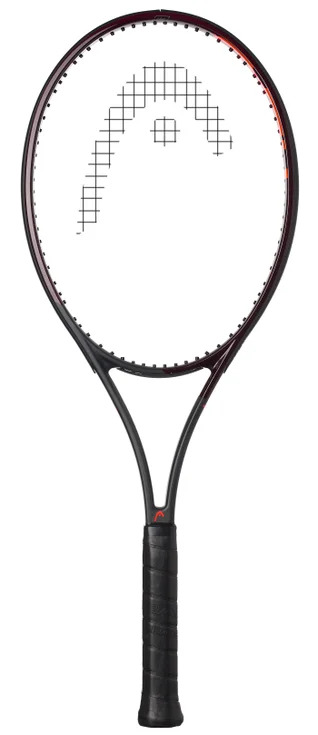
Yonex Vcore Pro
- Skill Level: Advanced
- Where It Excels: Stability against pace with great feel.
- What It Lacks: Hard to generate power.
The Vcore Pro is a great racquet for advanced players looking to control the court. The racquet excels at precise shots all in a comfortable frame. Beginners should steer clear of the racquet due to its inability to produce easy power. But, for those who can handle it, the plowthrough of the racquet is incredible.
I loved the Vcore Pro from the baseline and transitioning to the net. I did have trouble creating power on my serve, but it was fantastic in most other areas.
Specifications
- Head Size: 97 sq. in.
- Strung Weight: 11.5 oz.
- Length: 27 in.
- String Pattern: 16×19
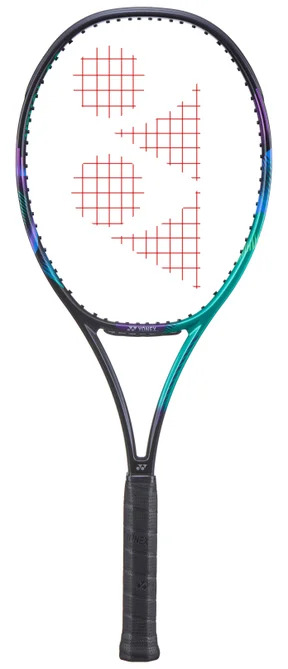
Wilson Blade 18×20
- Skill Level: Intermediate to Advanced
- Where It Excels: A good mix of comfort and control.
- What It Lacks: It does not provide much power and has a muted feel.
The Wilson Blade 18×20 is built for players seeking control and feel. The dense string pattern provides more precision on shots while still being easy to swing to avoid injuries. What it lacks in power it makes up for in unmatched control.
This version of the Blade wasn’t my favorite because of it’s lack of power. However, the comfort level was great and it is a very popular racquet among advanced players.
Specifications
- Head Size: 98 sq. in.
- Strung Weight: 11.4 oz.
- Length: 27 in.
- String Pattern: 18×20
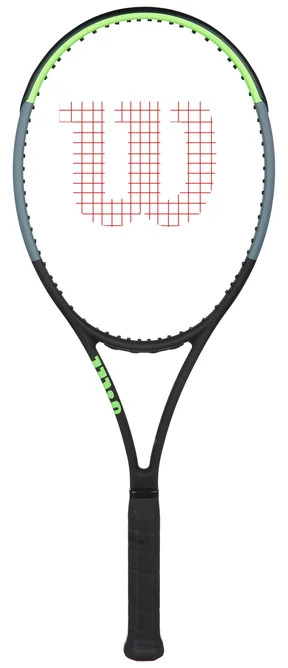
Head Speed Pro
- Skill Level: Intermediate to Advanced
- Where It Excels: A good blend of power, control, and feel.
- What It Lacks: Doesn’t excel in any area.
The 18×20 string pattern and Graphene 360+ technology help give the Speed Pro a blend of control and feel. Plus, the frame is 100 square inches and relatively thick, adding power. This racquet was built for players looking for a balanced racquet.
This is the racquet I personally use. I like it’s balance of feel, power, and control. The larger frame helps even out the tight string pattern giving it forgiving, yet precise performance.
Specifications
- Head Size: 100 sq. in.
- Strung Weight: 11.6 oz.
- Length: 27 in.
- String Pattern: 18×20
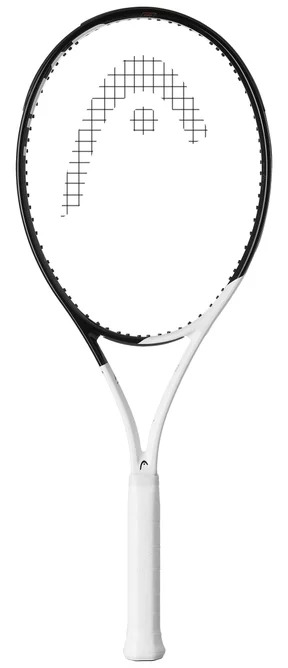
Babolat Pure Strike 18×20
- Skill Level: Intermediate to Advanced
- Where It Excels: A good balance of control and feel.
- What It Lacks: Power on groundstrokes and serves.
Used by Dominic Thiem, the Babolat Pure Strike is one of the best racquets on the market for players who already create power. It will help increase your precision and has a solid feel at contact. If you like to play aggressively, this racquet allows you to take big cuts without fear of over-hitting.
Similar to the Blade, I had trouble creating power and depth with this racquet. However, it performed well on returns and net play for me. It has a very comfortable feel as well.
Specifications
- Head Size: 98 sq. in.
- Strung Weight: 11.4 oz.
- Length: 27 in.
- String Pattern: 18×20
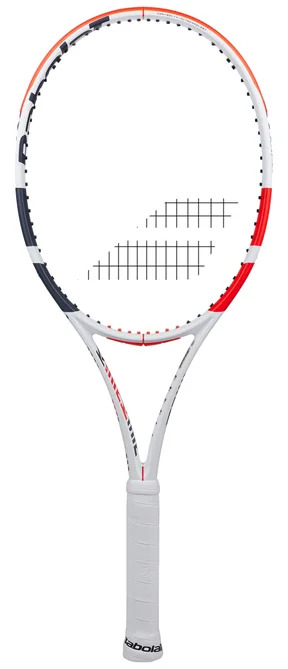
Head Gravity Pro
- Skill Level: Advanced
- Where It Excels: A good blend of flexibility, control, and feel.
- What It Lacks: Generating power and depth on groundstrokes.
This tennis racquet will help advanced players keep the ball in the court with precision. It will perform well against power from both the baseline and the net. This racquet has a thin frame with a generous 100 square inch head size. The 18×20 string pattern helps maximize control and feel. This racquet also has good flexibility, and Head’s Graphene 360+ technology enhances the feel and adds comfort. It’s easy on the arm, making it a good racquet for tennis elbow. The weight gives the Gravity Pro great stability as well.
Stronger players who take big swings might like the Gravity Pro. I personally didn’t like it’s lack of power, but I did feel that I could control the ball better when I took bigger swings on groundstrokes.
Specifications
- Head Size: 100 sq. in.
- Strung Weight: 11.7 oz.
- Length: 27 in.
- String Pattern: 18×20
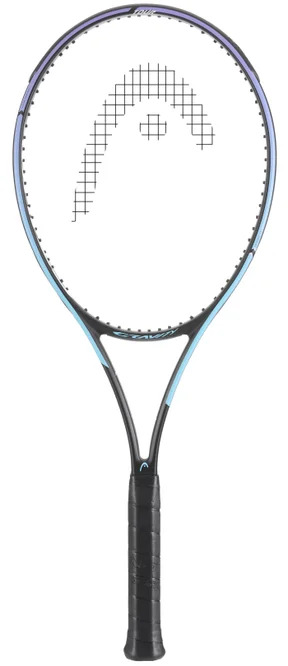
Head MicroGEL Radical OS
- Skill Level: Beginner
- Where It Excels: Providing control for beginners.
- What It Lacks: Slightly heavy for beginners.
This racquet has a 107-inch head size, making it excellent for beginners. The tight 18×19 string pattern offers great control and feel allowing you to improve fast. The 11.1 oz weight of the racquet adds power and stability as well. For players who are relatively athletic and physically strong with good hand-eye coordination, this is a great racquet.
Specifications
- Head Size: 107 sq. in.
- Strung Weight: 11.1 oz.
- Length: 27 in.
- String Pattern: 18×19
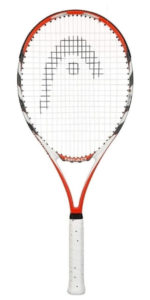
Conclusion – Our Pick for the Best Overall Tennis Racquet for Control
The best overall tennis racquet for control is the Wilson Pro Staff. Not only does it provide maximum control from the baseline but it also is a very comfortable racquet without sacrificing too much power.
It also helps you provide spin and offers solid feel in a thin frame. The different versions of the Pro Staff means that most player can find one for their skill level.
